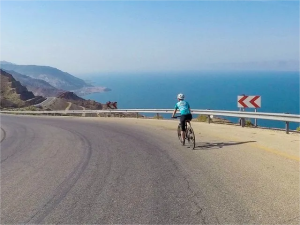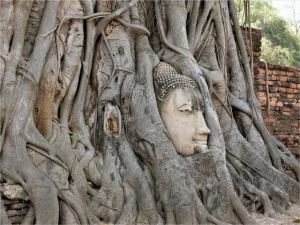Bay of Islands Newfoundland and New Zealand – Two Harbours One Explorer
- by Mohamed Adam
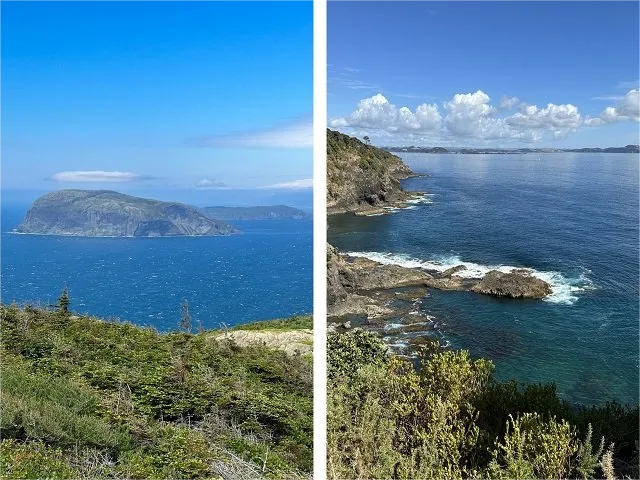
From the rugged coastline of Western Newfoundland to the serene beaches of New Zealand lies a striking contrast of natural beauty and cultural heritage. Yet the Bay of Islands Newfoundland and the Bay of Islands New Zealand share a surprising common feature.
While two bays bearing the same name may seem plausible, having them named by the same explorer is intriguing. After all the two bays are on opposite sides of the world.
James Cook’s Explorations
Newfoundland and Labrador
In 1767, James Cook was in his fifth and final year of mapping Newfoundland’s intricate coastline. Focusing on the west coast he discovers, explores and coins the Bay of Islands due to the number of large islands within the bay. Not overly creative but an accurate description.
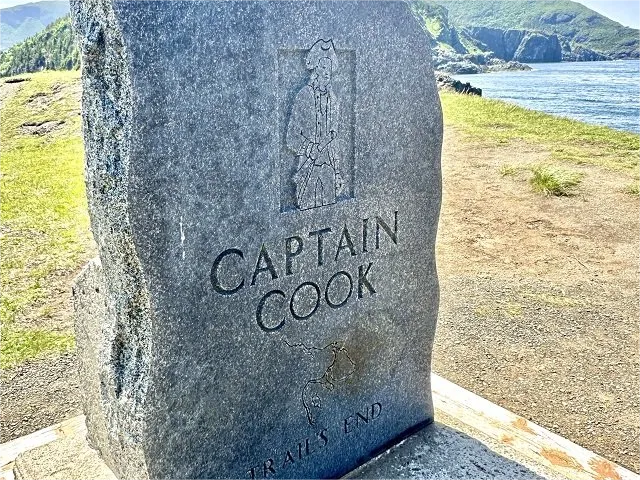
The area was remote and sparsely populated, but with obvious, abundant natural resources such as fish and lumber.
Upon completion of his detailed mapping of the island of Newfoundland, James Cook returns to England. King George III, so impressed with James Cook’s skillful mapping, he awards the explorer the command of a scientific voyage to the South Pacific Ocean in 1768.
New Zealand
Sailing southward on the H.M.S. Endeavour, Cook voyages through the Atlantic Ocean, and around the southern tip of South America, pushing onward to the Pacific Ocean.
His goals were to observe the transit of Venus across the Sun (June 3, 1769) and find the theoretical land dubbed “Terra Australis Icognita”.

After making stops in Brazil, Tahiti, Huahine and Raiatea, James Cook heads toward what we now call New Zealand. Soon Cook and crew begin the circumnavigation of the North Island of New Zealand.
The Endeavour locates a large bay of turquoise waters filled with islands. Today we know the bay has a total of 144 islands ranging from small outcrops to inhabited islands and private farms.
Communication and interpretation between the indigenous Māori and James Cook’s crew got off to a disastrous start with the shooting of a Māori leader offering a ceremonial challenge.
James Cook, after smoothing the waters with a Tahitian interpreter, goes on to name the area the Bay of Islands.
An amazing cartographer and explorer, but a rather unimaginative coiner of place names. A mere two years after naming one Bay of Islands, Cook strikes again with the duplicate name.
Now one can understand the concept of giving a descriptive name to topographical locations, but identical names? Why not “Islands Bay” or “Many Islands Bay” for instance.
Perhaps Cook could not dream of the world becoming completely interconnected. Thus, he never thought most people would ever learn about both Bay of Islands.
The Bay of Islands of Newfoundland and Labrador
Newfoundland and Labrador’s Bay of Islands is bordered on the north by North Arm Hills and to the south by the Blow-Me-Down Mountains. The largest of the collection is Woods Island, where an abandoned town of the same name rests.
Flowing into the Bay of Islands, the Humber River, one of Newfoundland and Labrador’s main rivers, flows from Deer Lake. This creates a vital estuary.
The city of Corner Brook sits at the mouth of the Humber River. There are many towns and villages along the shore of the Bay of Islands with the main industries being fishing, forestry and tourism.
Notably York Harbour and Lark Harbour names after James Cook’s ships the Lark and York used during his mapping of Western Newfoundland.
Other island names include Woods, Pearl, Tweed, Guernsey, Governors, and Seal. As a note of interest, the Bay of Islands is located along the very northern end of the Appalachian Mountain chain which stretches as far south as Alabama.
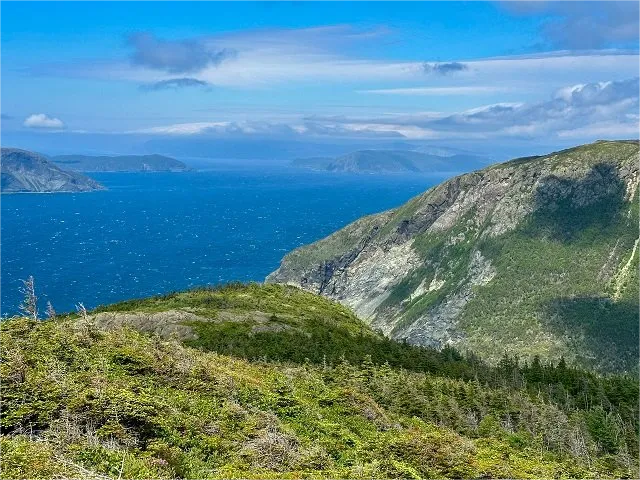
Southhead Lighthouse Trail
While on multi-day hiking adventure in Western Newfoundland, our guides for the day, Everoutdoor Adventures, coaxed us up a challenging and jaw dropping climb from Bottle Cove into the Blow-Me-Down-Mountains.
The 8 km Southhead Lighthouse out and back trail is rated moderate to difficult with the reward of spectacular views of the Bay of Islands. The strong wind, apparently the norm for this region, did not impede the magnificent views. However there is no lighthouse. The view includes the former lighthouse site.
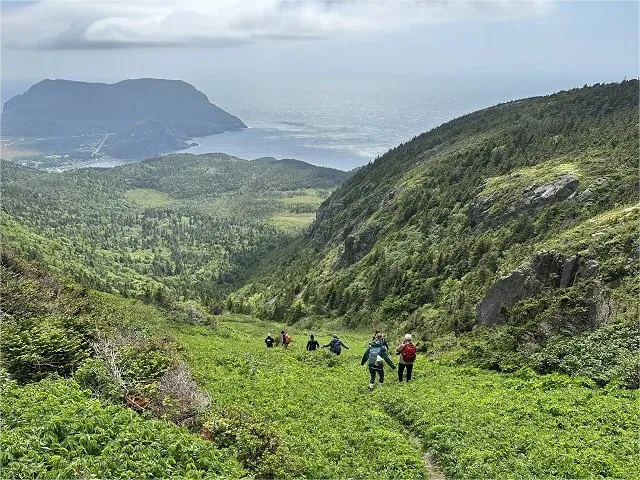
Once at the top of our climb, the guides from Everoutdoor set up a charcuterie board for our lunch. Hiking in style in Western Newfoundland!
Returning to beautiful Bottle Cove, then onto the Saltbox at Benoit’s Cove for a fresh seafood boil-up, and great views of the Bay of Islands.
Our stay in the Bay of Islands ended with a night at the beautiful Hew and Draw Hotel in Corner Brook.
The Bay of Islands New Zealand
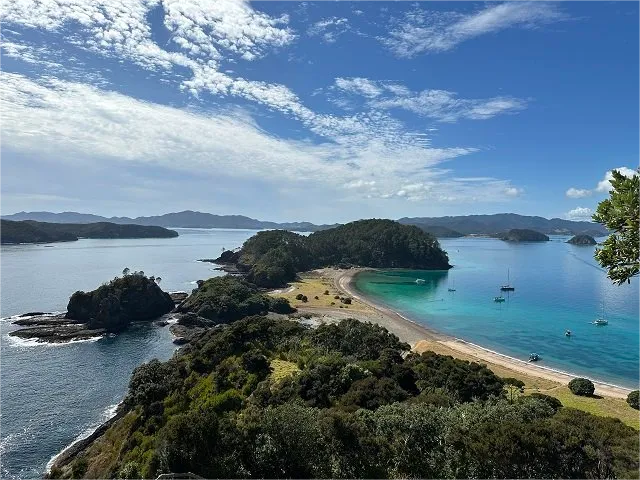
For New Zealand’s Bay of Islands, the official names of the bay’s islands are virtually all of Māori origin, such as Moturoa, Motuarohia, Moturua, Motukiekie, Okahu, Waewaetorea, and Urupukapuka (slightly more difficult to pronounce then their Newfoundland counterparts).
The subtropical climate in this area allows for a thriving tourist industry, with multiple daily boat tours of the Bay of Islands.
The town of Paihia is known as the gateway to the Bay of Islands. Other towns that sit on the bay of islands include Haruru, Russell, Opua, and Okiato.
Other Bay of Islands in the World
Not surprisingly, there are other locations in the world that have a “Bay of Islands” although these not explored by James Cook.
Bay of Islands of Victoria, Australia
Yet another Bay of Islands exists along the Great Ocean Road in the State of Victoria, Australia.
Although the origin of the name is unknown, it is doubtful James Cook named this bay. There is no record of Cook exploring the south coastline of Australia.
Australia’s Bay of Islands is small in comparison to its New Zealand and Newfoundland and Labrador counterparts. However, the views of limestone cliffs and naturally carved columns are stunning.
From the rugged coastline of Western Newfoundland to the serene beaches of New Zealand lies a striking contrast of natural beauty and cultural heritage. Yet the Bay of Islands Newfoundland and the Bay of Islands New Zealand share a surprising common feature. While two bays bearing the same name may seem plausible, having them named…


